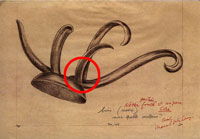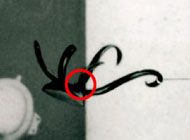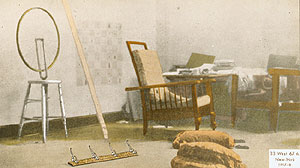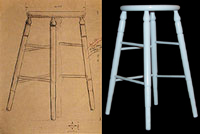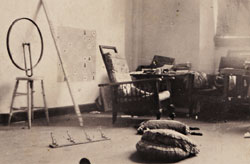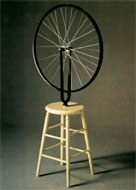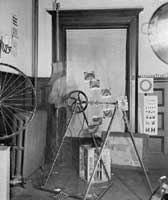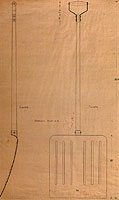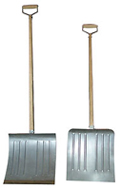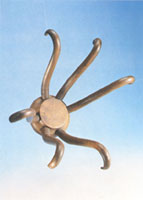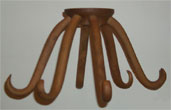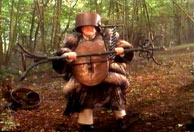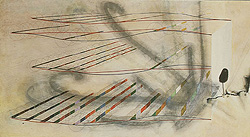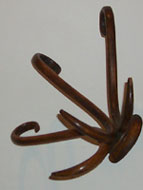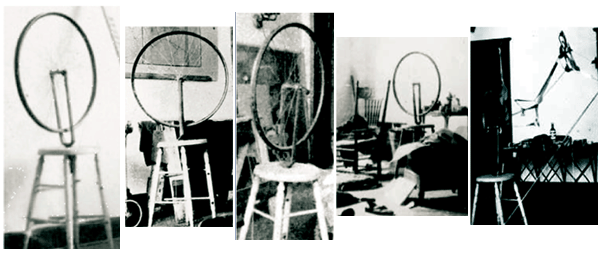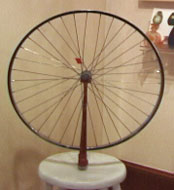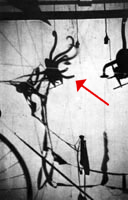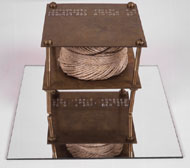|
page3
|
|
Why
the Hatrack is and/or is not Readymade: by Rhonda Roland Shearer with Gregory Alvarez, Robert Slawinski, Vittorio Marchi and text box by Stephen Jay Gould
<PART I> |
|||||||||||||||||||||||||||||||||||||||||||||||
4.
1964 Blueprint with Interactive 3D model of lost version, Schwarz 3D
Hatrack model
My examination of other 1964 blueprints for other Schwarz readymades might be helpful to mention here. Also signed "Marcel Duchamp, okay," the bicycle stool blueprint is similarly ambiguously and inaccurately drawn (most likely because Schwartz's draftsman did not know how to interpret the broken legs and rails as depicted in the 1941 Boite-en-valise print of the bicycle wheel (also showing the coatrack). See illustration #12A, B and C, notice that the two most right horizontal rails in the blueprint go in two different directions and are cut off oddly, as depicted in the original studio photograph (12C). In addition, the 3 legs are not evenly spaced as one would expect in a blueprint (and the fourth leg is missing completely) and yet in the final Schwarz edition (12D), all legs are completely symmetrical. Note that illustration 12B also contains the within 3D model we made using the information contained in the 1964 stool Blueprint (also 12B).
The shovel blueprint
indicates that the handle was literally traced from a well known Man
Ray photograph that captured the shovel hanging high above eye level,
(see illustration 13A and B). At this height, as the eye looks up the
shovel's wooden shaft's outside edges appear to converge (and get narrower
with more distance.) To create a blueprint, perspective distortion must
be accounted for (and discarded) if you use a photograph as a source
to recreate an accurate 3D model. See the shovel blueprint illustration
13B, the front and side elevation views both depict the converging lines
that were later, amusingly translated in the construction of Schwarz's
3D model. The shovel's wood shaft, literally gets progressively more
narrow from metal blade to the handle. See illustration 13C showing
the final Schwarz 3D model built from the blueprint as a much smaller
3D model on the left than the shovel on the right that was built from
measurements of actual example of the Schwarz edition of 8 snow shovels)(9).
Let us return to the hatrack blueprint 1964 and the 3D model. If Schwarz's 1st version of the hatrack 3D model, indeed, looked like the geometry in this blueprint, it's no wonder why Duchamp insisted upon throwing it out and felt he had to redesign it.. . and yet his 2nd and final version of the Schwarz hatrack looks even less like the photographs of the "original" 1916-17 hatrack in his studio! (I will later discuss the likely reason why Duchamp approached his hatrack in this technique of "information" that decays in a series of snapshots over time). 5.
1964 Blueprint with Interactive version of 3D Schwarz model Compare
5 Interactive Models with Tu m' and Cast Shadows Depictions
The Tu m' shadow's
2 long hooks and 3 short hooks, in particular, (see illustration 15A,
B) if viewed upside down and then compared to the 1904 Thonet model
when rotated into similar position, can readily be seen as fragments
of 3 "S" shape hooks (albeit, that the 3 "S"'s in
Tu m' are incorrectly and asymmetrically angled in relation to
each other and the top of one is cut off when compared to the Thonet
1904 3D model below). In the case of Duchamp's
hatracks and other readymade objects, we are in the same position of
discovering that a bicycle wheel that we assumed was round in a photograph
was, in fact, oval. Since we only had a set of photographs of the second
version of the Bicycle Wheel, and not the actual object, the
only thing we could do was to take measurements from the 2D representations,
fuse and build 3D models (both physically and in computers) based upon
the group of photographs, and then test and measure again.
Ironically, my bicycle wheel example turns out not to be hypothetical. See illustration 16A, B. From the set of bicycle wheel photographs, after we made measurements and models, and tested them, Robert Slawinksi, in our ASRL group, concluded that the axis of the Duchamp bicycle wheel was, in fact, not in the center of the wheel! Duchamp had lengthened some spokes and shortened others to create a large and surprising effect that is based upon only a very small difference in the decentered positioning of the axis. Click on #16B to see the video of what happens when our 3D model of one of Duchamp's bicycle wheels turns(11). The Cast Shadows 1918 photograph should also be examined by spectators in comparison with the 5 interactive hatrack models, see illustration 17. This representation of the hatrack indicates 3 long hooks and two short hooks. The first long hook on the left, hanging by a string, ambiguously appears as if it could be attached in a whole "S" shape with the first small hook on the left. A more likely interpretation is that the middle long hook is one "S" curve with the first (left) small hook and that the long hook at the most right is connected to the right most small hook. Yet this is unclear for the right most long hook could share an "S" shape with the left most small hook. In addition to the hatrack shadow ambiguities, other ambiguities reign in this photograph. For example, Duchamp's work Hidden Noise (see illustration 18A, a closeup of the Cast Shadows, 1918) oddly appears twice (he supposedly only had one original in 1918 -- the multiple edition of 8 was made much later in 1964, see #18B that shows the original Hidden Noise.) One has to conclude that Duchamp either somehow used mirrors to multiply the Hidden Noise shadow, or he created a photographic composite where he layered different photographs together into one image(12). Duchamp used both techniques in his photographs, a topic we will explore in the next section.
|
|||||||||||||||||||||||||||||||||||||||||||||||

